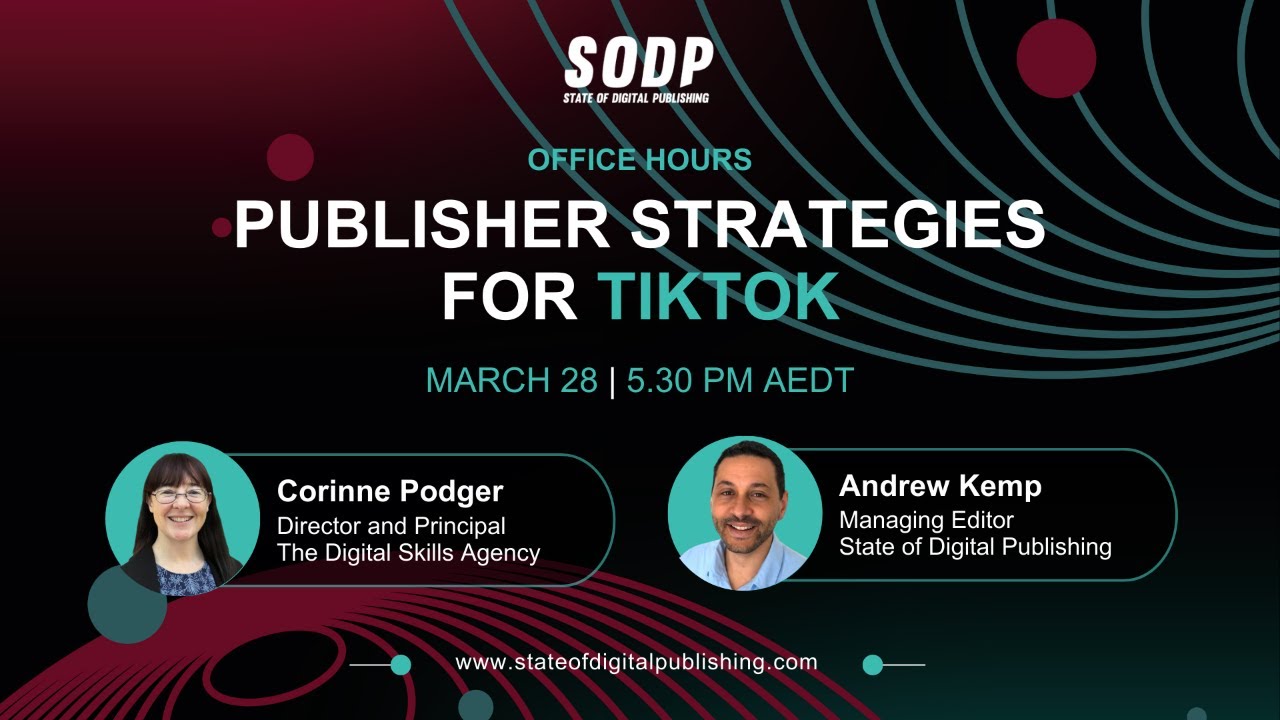With so much negative coverage of publishing, we at Bibblio are shining a spotlight on the many vertical publishers that are thriving. Welcome to the “Vertical Heroes” series of interviews.
In this sixth edition, BOXROX Editor-in-Chief Robbie Hudson and Senior Account Manager Clemens Limberg share the success story of their web magazine for competitive fitness and functional sports. Bibblio CEO Mads Holmen had a chat with Robbie and Clemens about taking responsibility as media business for shaping culture, the importance of a detailed SEO plan (and doing the hard work), and their impressive revenue growth through consistency.

Robbie Hudson, Editor-in-Chief at BOXROX
Mads: who is the BOXROX target audience?
Robbie: People aged 18–50 with a keen interest in sport, health, fitness and nutrition. We have a fairly even split between female and male readers which I am happy about. A passion for CrossFit and Functional Fitness is the core interest that unites our audience. Our top countries in terms of readership are: USA, UK, Canada, Germany, Netherlands, Ireland, South Africa, Australia, New Zealand, Turkey, Portugal, Greece and Spain.
M: what different types of content are you offering the fitness enthusiast?
R: The latest news from the CrossFit and Functional Fitness scene, training tips, workouts, nutrition, stories from the community, a female specific section, psychology and athlete interviews, among others.
My aim is to create content that solves problems for our readers and helps them improve; whether that is to get their first pull up, build muscle, win a large-scale competition or overcome an anxiety disorder that stops them from training at all (all true cases). I have used those examples to illustrate the wide variety goals and abilities that are prevalent across our audience. The vast majority of our content is written, but we also produce video interviews.
M: how large is BOXROX in terms of audience and staff?
R: Leo Marose and Stefan Berntheisel are the co-founders, Kristiyan Katsarov handles IT and tech, Clemens on business and accounts, Carolina Kyllmann and I are the editorial team. We work with an extended network of over 250 contributing writers as well. These include top elite athletes, coaches, nutritionists and some of the biggest names in our niche.
M: BOXROX hash managed to grow impressively, what has been the secret sauce?
R: The ‘secret sauce’ has a few ingredients. Firstly, consistent solid content – The internet is full of mediocre content, so don’t make it. When I think about an article that I wish to create, I try to match that with a contributor that has the best credentials then create from there. For example, if we create an article on improving endurance for running, then I will try to speak with a former professional ironman and elite coach in order to get all the info first hand. I am a fan of primary sources.
Secondly, create content that solves specific problems – We create a lot of content for masters, teenage athletes, beginners, female athletes and so on. We produce content that helps people in a specific way, so therefore it is useful and they want to share it and talk about it naturally.
Thirdly, set primary objectives for everything that you do so that everything can be measured and tracked. The KPIs are relative to the SMART goals that I set. For example, Facebook is primarily a way to bring traffic to the website. Links generally do not perform as well as photos or embedded videos on Facebook (based on their algorithm), but a slightly lower engagement rate is fine because the primary goal is traffic.
Fourthly, have a highly detailed SEO plan – We tackle singular words, phrases and long tail SEO keywords in a systematic and rigorous way. At the moment I have a list of 500 that we are working through. We do the research, then we do the hard work.
Fifthly, mistakes are OK – At BOXROX we test content ideas with specific goals. If they don’t work then we refine them or move on. It’s fine to fail, so long as it helps you create better ideas and content. There’s a good combination of creative insight, intuitive thinking and wilder ideas underpinned by data tracking and objective analysis. Because of our structured posting schedule and SEO plan, these additional projects will either bring extra audiences or do nothing at all (and we learn from them), so it’s a win-win situation.
M: COULD YOU ELABORATE ON YOUR SEO STRATEGY?

Clemens Limberg, Senior Account Manager at BOXROX
Clemens: With SEO you have to get the structural basics right and then build on that foundation. Your pages need to be optimised with the correct keywords and they need to load quickly. From there you can be creative, experiment and find what works for you.
We completely ignore the readability scores for our articles because they dumb down and oversimplify the language. We believe that people are capable of understanding complex ideas, and we see it as a form of cultural hegemony that we do not wish BOXROX to be a part of.
M: how do you prioritize attracting new audiences vs. Engaging existing users deeper?
R: We have a decent rate of returning visitors every month, and we listen to what they say about what they want to read.
In terms of new audiences, we have extended our spheres to cover fitness, health, nutrition and training beyond the scope of CrossFit. By its very nature CrossFit is an amalgamation of different disciplines, so our tactics fill well with the subject matter at hand.
M: how are you retaining the audience at BOXROX?
C: I think we have to look at different areas here. Firstly, re-targeting via Facebook ads and other social platforms is definitely something we do, especially with our paid content from clients. This works very well for us since our content shows very strong organic reach on social media despite Facebook’s algorithm changes in the last years.
Secondly, retaining readers has a lot to do with the content and how it is presented. This includes user interface and user flow, design, readability, writing style, use of images and interactive elements. We are currently looking into a re-design of our site to make it more reader-friendly.
On top of this we have recommendation widgets and cross-links to keep readers on BOXROX and get them in touch with more content. Since we are the most-read magazine worldwide in this market, we have a strong fan-base and a lot of people that get all their information from our platform. This helps too! And in the end, if you already have a lot of readers, great content helps, and our team does a great job.
M: what are the key audience metrics you define success by?
C: Unique users and page views are the two most important metrics. We track hundreds of other metrics, allowing us to make subtle and reactive changes and improvements, but those two are the most important in terms of defining our success.
M: what’s your social media strategy?
R: We post seven times a day on Facebook – four posts are always new articles from BOXROX. One post on Instagram (with traffic as the primary objective). All articles are auto-posted onto Flipboard. Facebook and Instagram are absolutely necessary for us. We definitely monitor changes, trends and emerging social media tools, but without clear goals they can become voids that simply swallow time.
M: how do you drive engagement when readers land on your site?
R: We use CTAs within articles to guide and stimulate discussion. We also cover topics such as transgender athletes and performance enhancing drugs bans which always create fierce debate among our readers. With these topics I am careful to present the facts as they are made available, and speak to the athletes personally whenever possible.
M: would you describe boxrox as data-driven?
C: Definitely. Because the founders of BOXROX magazine have a background in IT and social media, we focused on specific KPIs early on. We have designed our own KPI dashboards over the years. Currently, over 100 KPIs help us to classify the relevance of our content for the reader, but also to evaluate new projects and their benefits. As a result, we are very fast in the final decision-making processes and have been growing our readership between 100% and 250% each year since 2013.
M: can you share some stats on the business to illustrate this growth further?
C: I guess the most impressive would be our readership increase since mid-2014. This would be 4200% since then. Our Facebook followers have grown by 1700% as well. In terms of revenue, this has increased by 760% since I started working at BOXROX back in October 2014. Out of our total revenue last year, 30% of the money came from content marketing and I believe this part will grow in the future.
M: could you shed a bit of light on content marketing and your other revenu models?
C: Right now, the vast majority of BOXROX’ revenue comes from B2B advertising through direct sales and agency partnerships. Due to our highly engaged audience, the high-quality content and CTRs others only dream about, we are in a solid position to deliver ROI for client campaigns. My goal is to provide a 7-star customer service and consulting before, during and after the campaign. And it shows: the majority of our clients has been with us between 2–5 years.
In addition to this we also use AdSense. We have done a lot of work to adjust parameters. This is now bearing fruit as we have very high CPMs paid from advertisers to be shown on BOXROX.
We are also looking into new ad formats, video content, subscription models and other ways to generate revenue!
Content from our partners
M: how do you drive site visitors to the sponsored content?
C: We are in the great position to be able trust our four main channels (organic, direct, social and referral) to bring a great amount of traffic. We also utilise paid options and target very specific custom audiences, usually via Facebook and Instagram. Our newsletter and browser notifications do the rest to make this the best possible client experience.
M: what’s the area you’re most excited about?
C: From a business perspective, it is major partnerships with lifestyle brands, agency cooperation and looking deeper into AdSense and AdX. From a growth perspective, it’s Google AMP and Google News as well as Instagram and other smaller social networks which are very promising.
M: why do you think your model has been successful?
C: In one word: consistency. We’ve seen many, many blogs and so-called “magazines” popping up over the years and only 1% has been able to make an impact. If you don’t get traffic and earn money fast, you will be out of business quickly. We are proud to be still privately owned and that has also been a reason why we grew so quickly over the last 7 years: it allows for quick decision making!
M: from your own journey, what do you think other vertical publishers could learn?
R: Next to the ingredients of the ‘secret sauce’ I mentioned earlier, it’s about me as Editor-in-Chief taking ownership. If the results aren’t good, it’s your fault.
Additionally, I think that it is important to realise that once a digital publication reaches a certain size, they have a responsibility to remember that their actions will shape public thought and opinion. Digital media has enormous potential to manufacture consent for certain issues, and that must be used responsibly, ethically and in a way that progresses public discourse for the better.
M: lastly, which other publishers do you look for inspiration?
R: Another Escape are one of my favourite magazines in terms of quality of content.
Deezen have established a great balance between in-depth content and shorter, more sensational articles that will drive a lot of traffic to their website. They are a good example of how to activate discussion and create a community atmosphere as well.
Al Jazeera’s channel organises their content exceptionally well. They cover topics in a deeply informative way, whilst allowing for the dynamism required for first-rate news coverage.












